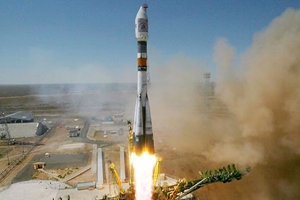Ru
|
Eng
Roscosmos to decide on second Belarusian satellite’s functionality within months
22.10.2015

Working in cooperation with Belarus the Russian space agency Roscosmos intends to decide on technical functions of the Belarusian satellite BKA-2 within the next few months, BelTA learned from Roscosmos head Igor Komarov on 22 October.
The Roscosmos head said: “We are now discussing the launch of the second satellite bearing in mind the importance of the project for us and for you. We are discussing technical details, the look, and the functions the satellite will perform. We are also taking care of business matters such as what markets the project will target and whether it will recoup the investments. We intend to come up with effective solutions soon.”
Academician Vladimir Gusakov, Doctor of Economics, Chairman of the Presidium of the National Academy of Sciences of Belarus, noted that a lot of research and technical efforts will precede the launch of the second Belarusian satellite. The scientists are now revising parameters and functions of the new satellite. “It is a non-military satellite, this is why it will have to serve a number of industries and enterprises. This is why we are taking preliminary orders. In other words, the look of the satellite has to match our economic tasks. We hope that we won’t have to wait for the launch of the second satellite for a long time,” noted the head of the National Academy of Sciences of Belarus.
BelTA reported earlier that Belarus intends to launch the second satellite for the high-resolution remote sensing of the Earth in 2017. The National Academy of Sciences of Belarus and Roscosmos signed the contract on creating the satellite a short while ago. Vladimir Gusakov was quoted as saying then: “We were in negotiations before it, there were doubts. We were wondering about financing, components, and electronics. We have since decided that we are going to launch the satellite together with Russian colleagues.”
The looks of the first and second Belarusian satellites will be similar but their content will differ greatly, in particular, the image resolution ability. While the current satellite boasts a two-meter resolution, the new one will have a resolution of less than one meter. Apart from that, the new satellite will be more durable.
Prior to that Russia and Belarus had created joint ground-based infrastructure to control the Belarusian satellite (BKA) and the Russian one (Canopus B) as well as the system to receive and process the data the satellites beam down.
The Roscosmos head said: “We are now discussing the launch of the second satellite bearing in mind the importance of the project for us and for you. We are discussing technical details, the look, and the functions the satellite will perform. We are also taking care of business matters such as what markets the project will target and whether it will recoup the investments. We intend to come up with effective solutions soon.”
Academician Vladimir Gusakov, Doctor of Economics, Chairman of the Presidium of the National Academy of Sciences of Belarus, noted that a lot of research and technical efforts will precede the launch of the second Belarusian satellite. The scientists are now revising parameters and functions of the new satellite. “It is a non-military satellite, this is why it will have to serve a number of industries and enterprises. This is why we are taking preliminary orders. In other words, the look of the satellite has to match our economic tasks. We hope that we won’t have to wait for the launch of the second satellite for a long time,” noted the head of the National Academy of Sciences of Belarus.
BelTA reported earlier that Belarus intends to launch the second satellite for the high-resolution remote sensing of the Earth in 2017. The National Academy of Sciences of Belarus and Roscosmos signed the contract on creating the satellite a short while ago. Vladimir Gusakov was quoted as saying then: “We were in negotiations before it, there were doubts. We were wondering about financing, components, and electronics. We have since decided that we are going to launch the satellite together with Russian colleagues.”
The looks of the first and second Belarusian satellites will be similar but their content will differ greatly, in particular, the image resolution ability. While the current satellite boasts a two-meter resolution, the new one will have a resolution of less than one meter. Apart from that, the new satellite will be more durable.
Prior to that Russia and Belarus had created joint ground-based infrastructure to control the Belarusian satellite (BKA) and the Russian one (Canopus B) as well as the system to receive and process the data the satellites beam down.
SCIENCE. TECHNOLOGY. INNOVATIONS
13.08.2024
28.06.2024
28.06.2024
25.06.2024
05.06.2024
15.05.2024
15.05.2024
26.04.2024
26.04.2024
26.04.2024













